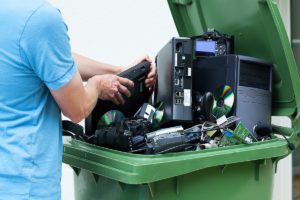If you work with electronics, whether as a hobby or a career, then you should be familiar with printed circuit boards. They look intimidating, especially to newbies, but they’re straightforward to work with once you’ve gotten acquainted with them.
Anyone with the right tools and materials can make their PCB by hand. It could be for a small home project or a product prototype. However, if you need a lot of PCBs, you can either start your production line or order from specialized factories. Almost every industry relies on PCB manufacturers in the USA to create boards that make their products possible.
Home inventors and hobbyists make PCBs all the time. But even the most experienced technician gets the occasional jitters when working with a PCB. If you’re thinking of delving into electronics, here are a few simple pointers for working with a printed circuit board:
Clean the board
The general rule for electronics is to keep it away from sources of moisture. And that’s correct. However, when the instructions say to wash the board, they mean exactly that. Washing the PCB in a cleaning solution is an essential step in building circuits. It is also done before and after you populate the board.
Organize your table
Hobbyists often start with electronic kits. The kits always come with the PCB, the components, the schematics, instructions, and the checklist. Before starting assembly, start with an inventory of all the components and put them in small boxes to avoid misplacement.
Most electronics projects seem complicated due to the sheer amount of components to track and dozens of joints you have to apply on a tiny PCB. Organizing your table in an organized way removes some of the headaches associated with circuit building.
Populate methodically
As projects climb in complexity, so do PCBs become more crowded. Accessibility soon becomes an issue. If the board is especially populated, you might find it challenging to get the component, soldering iron, and wire to the required area. One way to beat this is to plan.
When soldering the components, start with the lowest components and work your way up. That way, you won’t have significant components obstructing your view when installing small ones.

Use tweezers
Avoid using your fingers when placing components. Use electronics tweezers instead. While they’re often used for working with surface-mount components, they can also be used with through-hole components. Tweezers allow for more precise placement, something you’ll find difficult with your fingers.
Magnify your vision
Even with perfect vision, you’ll soon have difficulty looking at the PCB after hours of work. Use a magnifying glass to ensure that you’re looking at the right area. It can come in handy when troubleshooting issues and inspecting for damage. Always have a magnifying glass in your toolkit wherever you go.
Seal with hot glue
You can use hot glue to insulate electronic components on a PCB. Just avoid parts and components that are sensitive to temperatures or produce a lot of heat. You can even use hot glue to seal, secure wires, and waterproof components.
These are just some of the helpful things you can use when working with a printed circuit board. You’ll discover more as you advance in your craft and learn by trial and error.







